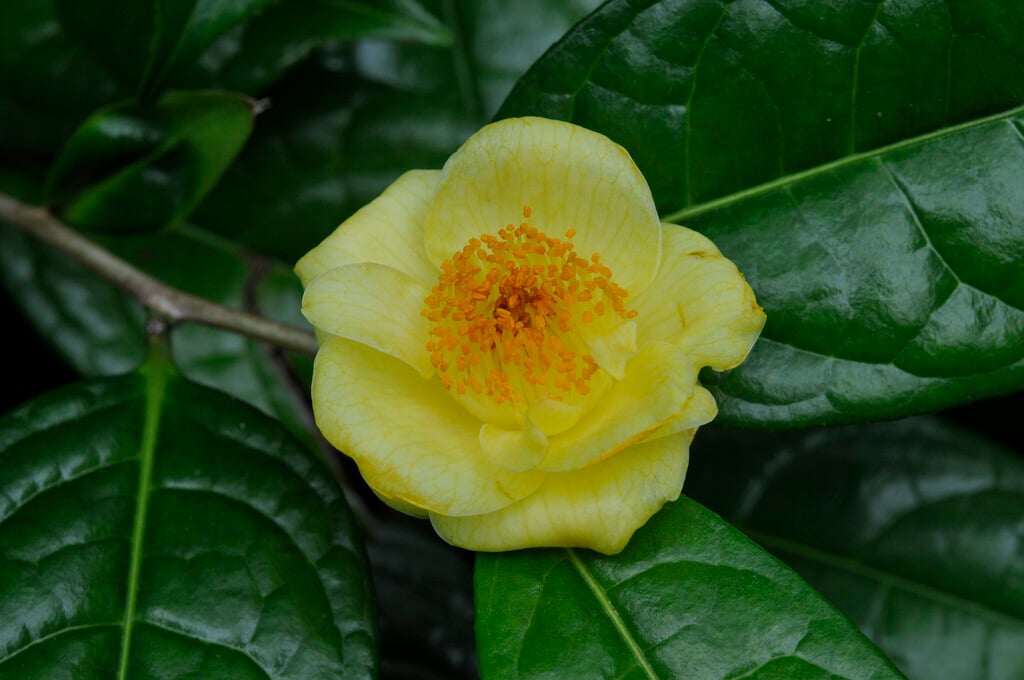Size
Ultimate height
2.5–4 metresTime to ultimate height
10–20 yearsUltimate spread
2.5–4 metresGrowing conditions
Moisture
Moist but well–drainedpH
AcidColour & scent
| Stem | Flower | Foliage | Fruit | |
| Spring | Green Bronze | |||
|---|---|---|---|---|
| Summer | Green | |||
| Autumn | Green | |||
| Winter | Yellow | Green |
Position
- Partial shade
Aspect
East–facing or North–facing or West–facing
Exposure
Sheltered Hardiness
H2Botanical details
- Family
- Theaceae
- Native to GB / Ireland
- No
- Foliage
- Evergreen
- Habit
- Bushy, Spreading branched
- Genus
Camellia are evergreen shrubs with simple, ovate, glossy, leathery leaves and showy flowers with solitary or clustered flowers early in the year
- Name status
Correct
How to grow
Cultivation
Grow under glass or in a warm, humid position with protection from frosts (minimum temperature 5°C). Prefers acidic soil with plenty of organic matter and good drainage. See camellia cultivation for more detailed advice
Propagation
Propagate by seed or by semi-hardwood cuttings
Suggested planting locations and garden types
- Patio and container plants
- Conservatory and greenhouse
Pruning
Pruning group 8 (evergreens), after flowering
Pests
May be susceptible to aphids, scale insects and vine weevil
Diseases
May be susceptible to honey fungus, Phytophthora root rot, camellia gall, camellia leaf blight, and camellia yellow mottle virus. Flowers may be infected by camellia petal blight
Get involved
The Royal Horticultural Society is the UK’s leading gardening charity. We aim to enrich everyone’s life through plants, and make the UK a greener and more beautiful place.
